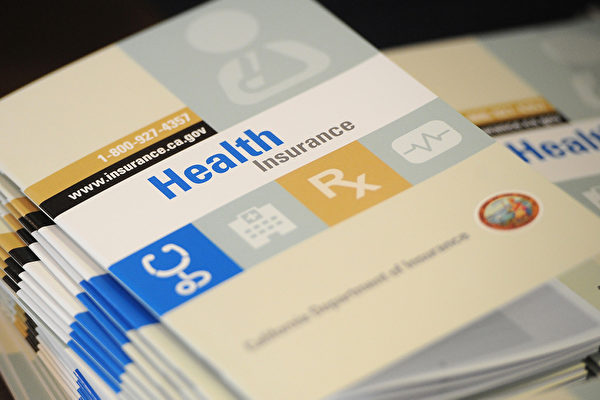In contrast to the past ten years of U.S. elections, neither of the two presidential candidates in 2024 has made healthcare plans a top priority to promote.
In the past, Democrats have introduced a series of comprehensive universal healthcare plans, but this topic was not discussed this time around.
Vice President and Democratic candidate, Heather Jinli, had previously supported universal healthcare, but now she only promises to preserve the Affordable Care Act (commonly known as Obamacare).
The 2010 Act expanded the government Medicaid program for low-income populations and made it easier for people to obtain private health insurance. Currently, it provides health insurance for approximately 45 million people who were previously unable to access it.
Democratic political strategist Chuck Rocha told The Globe and Mail that the coverage of Obamacare has made healthcare issues less urgent in politics.
“In all of the campaigns I have participated in, healthcare has not been among the top three issues,” he said. “Health insurance is not the most pressing concern for voters.”
Republicans had previously called for the repeal of Obamacare, but now they largely avoid this issue as Obamacare is relatively popular in red states like Florida and Texas.
The “public option” for healthcare at least partially addresses the affordability issue for some voters, offering a cheaper alternative to purchasing private insurance.
The United States is the only wealthy country in the world that cannot ensure all of its citizens have access to healthcare. According to data from the U.S. Census Bureau, 26.4 million Americans (approximately 8% of the population) were without health insurance in 2023.
Even those with insurance often face high out-of-pocket costs or deductibles when using their plans – ranging from $1,000 to $7,000.
A study by the Commonwealth Fund in 2022 found that 23% of Americans (nearly 73 million people) are underinsured.
Prescription drug prices in the U.S. are shockingly high, sometimes three times higher than in Canada and other high-income countries.
Rachel Nuzum, Senior Vice President for Federal and State Health Policies at the Commonwealth Fund, stated that cost reduction has replaced expanding coverage as the core issue of U.S. healthcare.
She pointed out that “underinsurance” is a major issue in the U.S. “You can have health insurance but not afford it, which is unique to America. The level of medical debt and medical-related bankruptcies is something you don’t see in other countries,” she said.
According to a study by the Commonwealth Fund on 10 wealthy countries, the U.S. spent 16.5% of its GDP on healthcare in 2023 – the highest among all surveyed countries, but with the worst healthcare outcomes. In comparison, Australia, with the best results, only spent 9.8% of its GDP.
During his 2020 presidential campaign, Biden made ambitious promises to create a healthcare “public option” that would allow all Americans to enroll in government-provided health insurance as an alternative to private insurance.
This was a compromise reached between Biden and the progressive wing of the Democratic Party. However, the “public option” disappeared from his agenda after taking office, and comprehensive healthcare reform is almost absent from both his and Heather Jinli’s campaign platforms.
Implementing the “public option” would almost certainly involve addressing price regulation issues for healthcare service providers, potentially leading to negotiations with hospitals. Hospitals are powerful lobbying groups, and the lack of regulation of hospitals is one reason for the high healthcare costs in the U.S.
The Biden administration has taken more targeted actions to lower costs during its term. It has limited the cost of insulin, increased Obamacare subsidies for health insurance premiums, and authorized negotiations for prescription drug prices.
Political consultant Rodell Mollineau told The Globe and Mail that considering the division among American voters and the long-standing divisions in Congress, reducing emphasis on universal healthcare or public options is a matter of political pragmatism.
“Given the differences in the House and Senate, the presidency is precarious, and those supporting this proposal would first consider the numbers in the next congress before attempting to bring up this issue again. This does not surprise me,” he said.
The Wall Street Journal reported that if Republican candidate and former President Trump wins a second term, Wall Street is betting that he would relax Medicare, the federal health insurance plan focused on retired seniors.
During the Biden administration, the United States’ federal Medicare and Medicaid Services took a hard stance on Medicare Advantage plans, such as cutting payments to related plans or limiting their marketing strategies. If the Democrats are re-elected, these policies are likely to be further strengthened.
Republicans have long tended to support government service privatization and, overall, are more friendly towards Medicare Advantage plans. Investors are betting that if Trump is re-elected, he may continue this trend.
However, health insurance companies focusing on serving Medicaid and Obamacare plans may face greater market scale reductions, though these plans are unlikely to be overturned.
Joe Albanese, Senior Policy Analyst at the conservative think tank Paragon Health Institute, recently wrote a report suggesting some modifications to the Medicare Advantage plans.
He said Republicans want the program to thrive but need to increase the efficiency of the program by adjusting the way subsidy payments are made.

